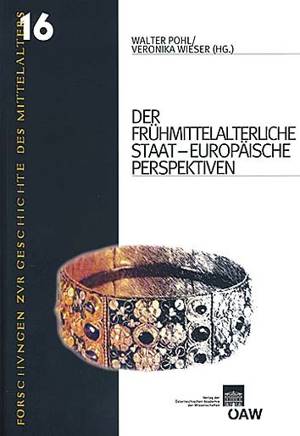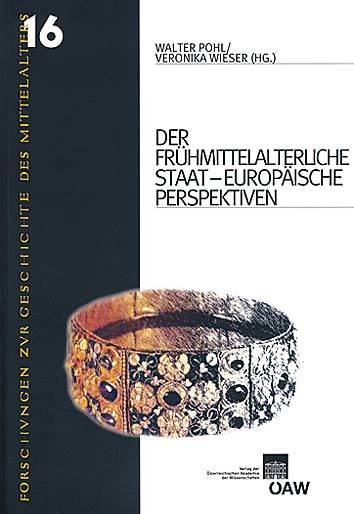
- Afhalen na 1 uur in een winkel met voorraad
- Gratis thuislevering in België vanaf € 30
- Ruim aanbod met 7 miljoen producten
- Afhalen na 1 uur in een winkel met voorraad
- Gratis thuislevering in België vanaf € 30
- Ruim aanbod met 7 miljoen producten
Zoeken
Der Fruhmittelalterliche Staat - Europaische Perspektiven
Paperback | Engels, Duits | Denkschriften der Philosophisch-Historischen Klasse | Forschungen zur Geschichte des Mittelalters | nr. 386
€ 141,95
+ 283 punten
Omschrijving
The early medieval state is a controversial topic. Differences remain between European research traditions as to their respective methods and interests. The aim of this volume is to transcend national historiographies in the field. By overcoming the legal and institutional bias of older research, new points of view can be reached. The contributions assembled here are less concerned with the terminological problem of whether early medieval kingdoms should be called 'states' or not, than how political integration was possible in early medieval Europe. The first section of the book contains studies of different European states in different periods, from the first 'barbarian kingdoms' on Roman territory to the Ottonian empire and the early Celtic, Slavic and Scandinavian realms.The second part addresses a number of structural issues in a comparative manner, with several contributions dealing with actors, resources, symbolic legitimation and limits of the state respectively. The authors are among the leading scholars in their fields, and the resulting overview is unique in its thematic range. The volume is a fundamental contribution to understanding the ways in which the interaction of monarchy and aristocracy, of ecclesiastic and lay institutions, of royalty and people helped create supra-regional realms which laid a basis for the construction of modern states in Europe.
Specificaties
Betrokkenen
- Uitgeverij:
Inhoud
- Aantal bladzijden:
- 616
- Taal:
- Engels, Duits
- Reeks:
- Reeksnummer:
- nr. 386
Eigenschappen
- Productcode (EAN):
- 9783700166047
- Verschijningsdatum:
- 2/12/2009
- Uitvoering:
- Paperback
- Formaat:
- Trade paperback (VS)
- Afmetingen:
- 211 mm x 295 mm
- Gewicht:
- 1814 g

Alleen bij Standaard Boekhandel
+ 283 punten op je klantenkaart van Standaard Boekhandel
Beoordelingen
We publiceren alleen reviews die voldoen aan de voorwaarden voor reviews. Bekijk onze voorwaarden voor reviews.







